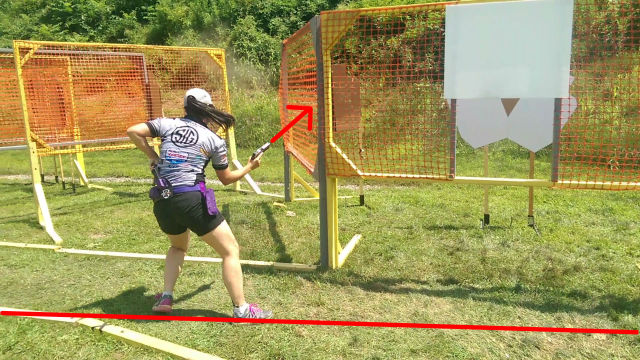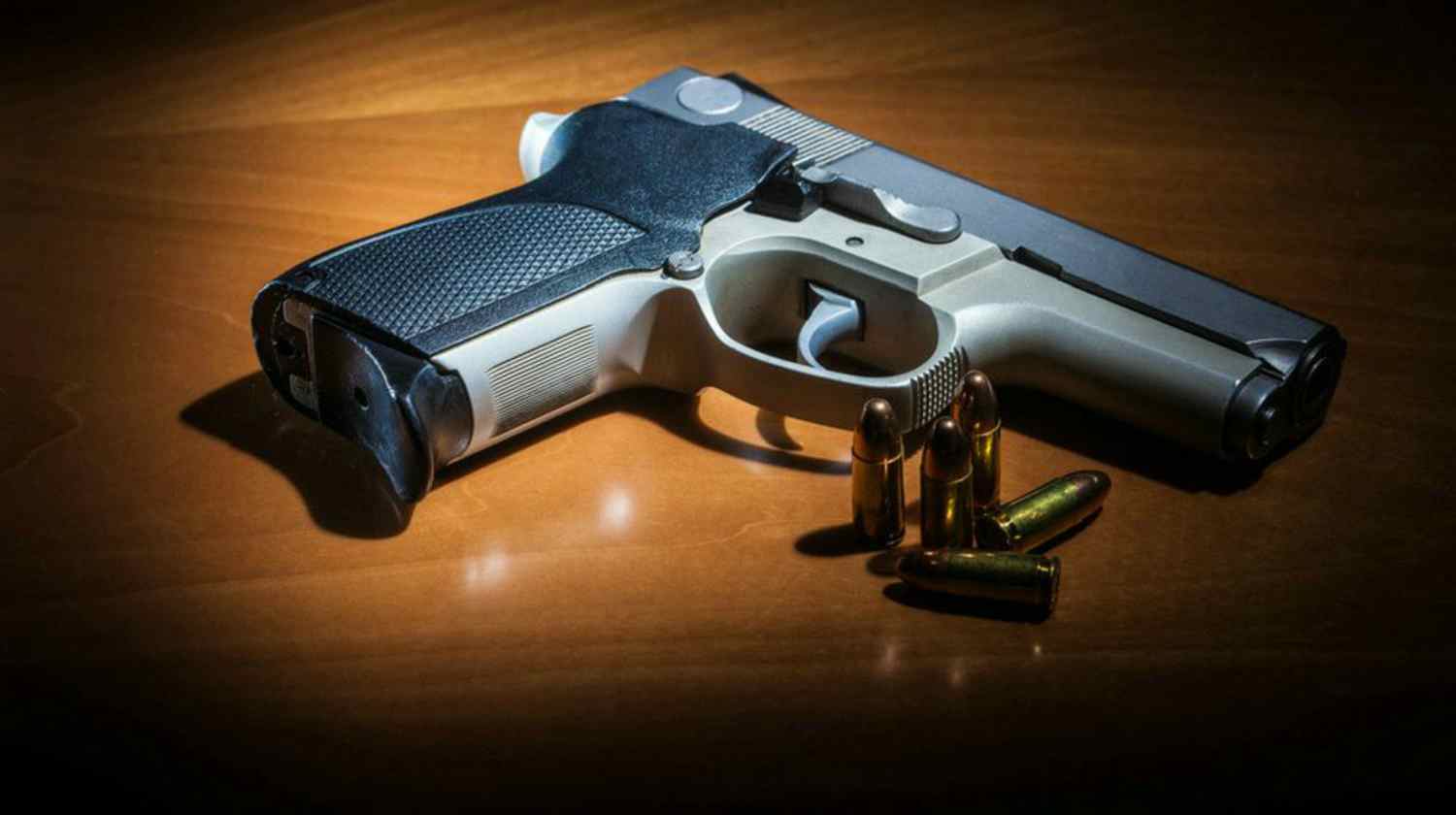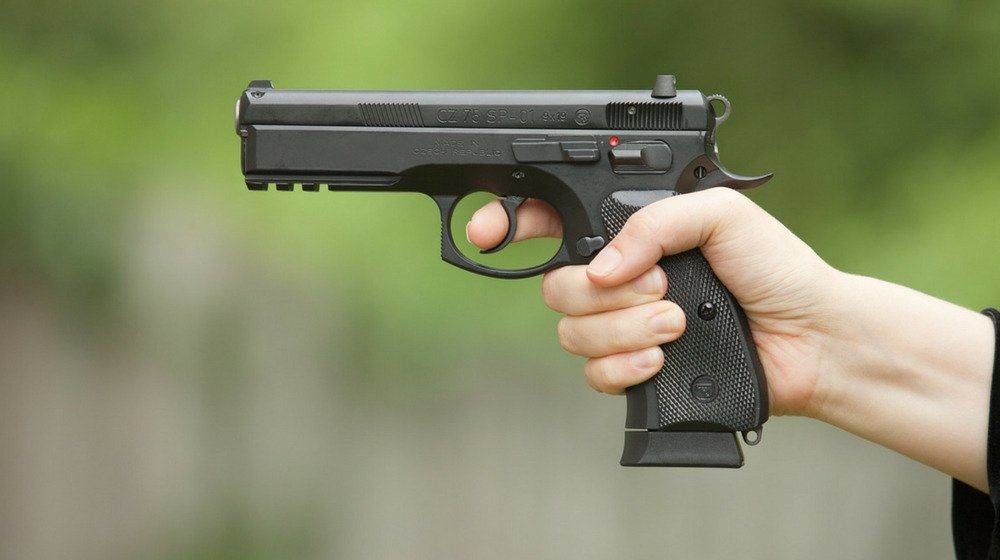Accessories & Gear
Competition Shooting: Getting Ready For Your First Match
Published
1 year agoon

Taking the Plunge: Being Ready for Your First Match
Competition is a scary word. For many people, participating in a competition means putting their skills (or lack of them) on the line for everyone to see. It means having to measure up against experienced, highly skilled competitors who are not friendly to the idea of “newbies” interfering and taking up time.
The competitive shooting world is a friendly place, fortunately. In fact, it’s one of the few sports where a new amateur can compete side by side with a seasoned professional. It’s not unlikely to find a pro or other experienced shooter taking a few minutes to give some advice to the new guy or gal at a match.

Shooters confer about a stage plan while the Range Officer gives a competitor last words of advice before she starts the stage.
If you haven’t tried a match before, there’s only a few things you need to have squared away before you’re ready: gear, safety, and basic gun-handling skills.
The equipment rules for almost every shooting sport can seem complicated to anyone, even veterans of the sport. Using the Internet to check out what current competitors are using is confusing and can lead to the impression that expensive guns and gear are necessary. However, most shooting sports have a way for mostly off-the-shelf equipment to compete, and most local matches will make allowances for a new competitor if what they bring is safe, functional, and somewhere in the neighborhood of what the sport requires.

Guns and gear can be as fancy or as simple as you can manage.
Safety is the biggest concern on all ranges and it’s even more vital as shooters begin to perform the more complex tasks most competitions include. The specific rules will vary from sport to sport, but they are generally all based on the universal rules of gun safety (no matter how you might recite them):

Gun Safety Rules
Safe muzzle direction is easy to understand at most regular ranges, but can get confusing once you start moving around. In many of the action shooting sports, you might be told you can’t break the “180 rule”. The “180” is an imaginary line that extends to your left and right when you face squarely down-range towards the rear berm. No matter what direction you face, the muzzle of your gun must stay between that imaginary line and the down-range rear berm.

The red line here is parallel to the rear berm and indicates the 180. As you can see from the arrow, the muzzle always points downrange.
The other cardinal rule for competitive shooting is that you must remove your finger from the trigger guard if you aren’t actually in the process of shooting at a target. Instead of just keeping your finger “off the trigger”, it is preferable (and sometimes required) to take your index finger and put it high up along the frame of your gun – above the trigger guard and not just outside of it. That way, there’s no doubt that you could fire the gun unintentionally by pressing the trigger.

Credit: Ron Jones (used with permission) – Notice how visibly the index finger is out of the trigger guard while the shooter is running.
It’s extremely important to stay very aware of applying these rules at all times. Not following them can get you disqualified from the match and asked to pack up your gun – and that’s the best-case scenario. Safety violations are probably about the only thing that can get a new shooter yelled at during their first match. Taking your time to make sure you are safe is a smart move, and about the only thing you should stress about while you get started.
Aside from basic gear and safety, you should also know the basic gun-handling skills needed for the sport you’re trying out. It’s both a matter of safety and a matter of your enjoyment. That means you should know how to safely load, unload, and fire your gun. Depending on the sport, you might also need to know how to draw a pistol out of a holster, or how to reload your gun.
Having a solid grasp of how to operate your gun will help you keep yourself collected as you try to do these things while under pressure, but always remember that you care more about your results than anybody else. Nobody else will be disappointed or upset if you aren’t fast, or if you’re a little clumsy, or even if you flat-out miss targets, as long as you remain safe and open to learning more.
Nobody is expecting you to be an expert the first time you step up to the line. You don’t even need to have all of the right gear, nor do you need to be a great shooter with lots of training already. In fact, by going to your first match, you’ll likely find out that you have a lot to learn about shooting…and that’s okay. That’s why you’re going back for more, right?

Staccato P Review | Staccato P 1000 Round – The Most Accurate Duty Pistol

Sawed Off Shotgun | Everything You Need To Know

CZ 75 SP01 Tactical Gun Review | Gun Carrier

PODCAST: Gun Law Changes All Across America Right Now

PODCAST: How to Win Olympic Gold

PODCAST: 50 Important Ideas For Self-Defense, Self-Reliance, and Personal Safety










Ray
March 11, 2024 at 11:48 AM
Greetings. Believe me I am aware that it is 2024, not 1984. I know that the shooting sports have changed a great deal. Unfortunately I have only encountered less than pleasant changes. Many years ago, it was for working class people with limited time and money for practice and occasional competition. Now it seems to have been replaced with folks that shoot 52 weekends a year, 3 times during the week, and in between sit at a reloading bench. My schedule does not allow me to do that. The friendliness disappeared and was replaced by a “win-at-any-cost” attitude. I used to enjoy it. Not any more. I am glad that some other folks still participate. Good luck always.